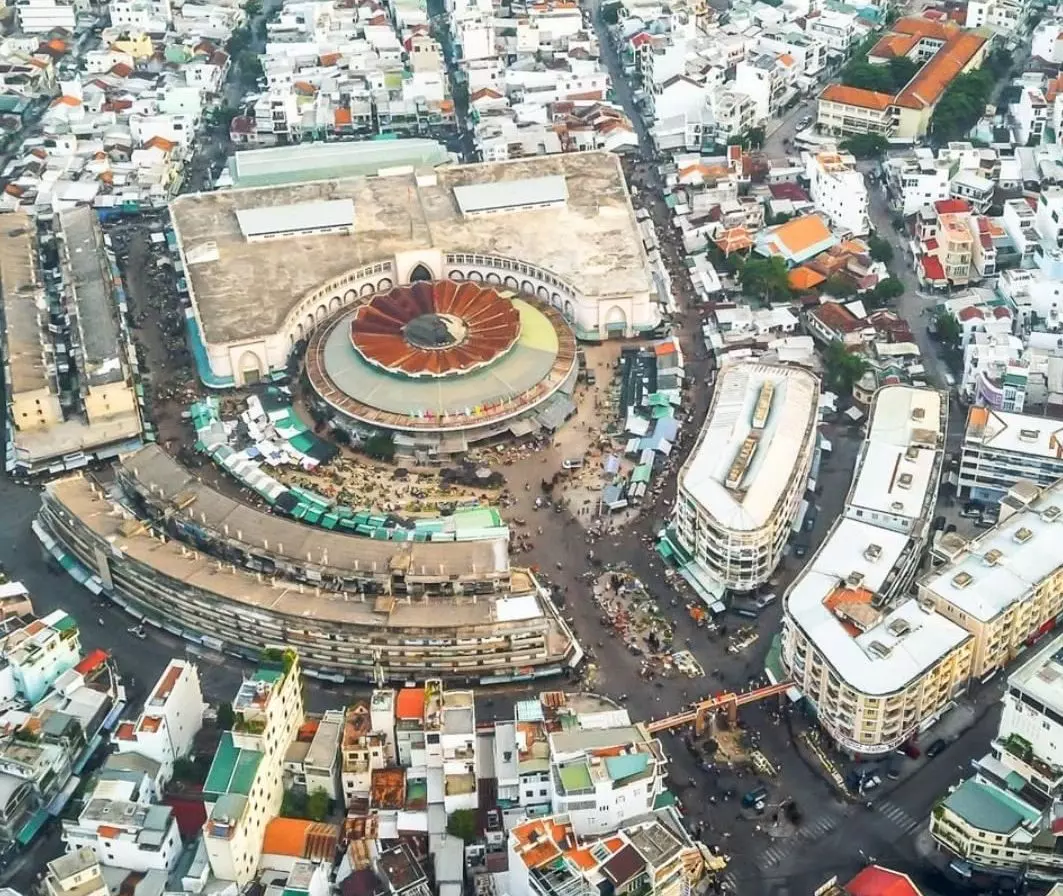Kien Trung Palace used to be a significant structure within the complex of the Hue Imperial City. Over the years, it has been tinted by time, becoming solemn and ancient.
Alongside many famous landscapes such as the Imperial City of Hue, the Perfume River, and the Ngu Mountain, Kien Trung Palace is also one of the interesting destinations when traveling to Hue. Although completely destroyed in 1946, the palace has been restored and recreated with a design similar to its original one.
Table of Contents
Where is Kien Trung Palace located?
Kien Trung Palace is known as one of the tourist destinations in Hue located within the Forbidden City area. The palace was built during the Nguyen Dynasty. It is currently situated at 32 Dang Thai Than Street, Phu Hau Ward, Hue City, within the famous tourist spot of the Hue Imperial City.
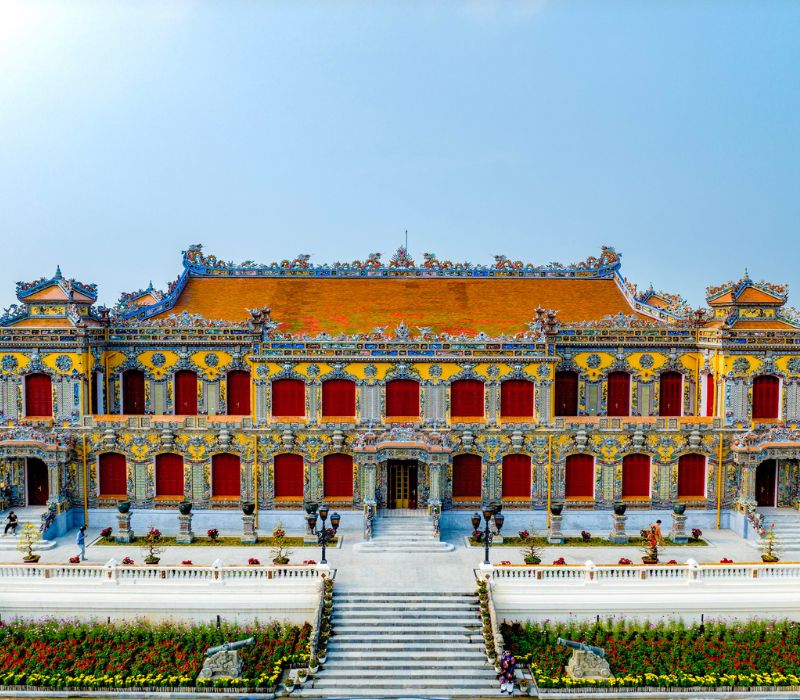
Directions to Kien Trung Palace: This palace is only about 2.7km from the city center. Visitors should take the shortest route from Phu Xuan Bridge – turn left onto Le Duan Street – then turn right onto Cua Ngan Street – continue onto 23/8 Street – and finally onto Doan Thi Diem Street. Then, follow Quang Duc Street to the Imperial City area. The distance is relatively close, so you can walk, use your own vehicle, or hire a taxi, as taxi fares in Hue are quite cheap. Additionally, you can book private car rental services in Hue from VnCarRentals.com to explore Kien Trung Palace and many other tourist destinations in Hue.
Before visiting Kien Trung Palace, here are some important information to note:
- Opening hours: Summer opening hours: 6:30 AM – 5:30 PM; Winter opening hours: 7:00 AM – 5:00 PM.
- Ticket prices: Since the palace is located within the Hue Imperial City area, the ticket prices are based on the entrance fee for the Hue Imperial City. Specifically:
| Category | Price (VND) |
|---|---|
| Adults | 200,000 |
| Children (<1.3m) | 40,000 |
| Foreigners | 200,000 |
Kien Trung Palace – The Splendid Palace of the Nguyen Dynasty
History of Kien Trung Palace
In 1827, King Minh Mang ordered the construction of Minh Vien building, consisting of 3 floors with a height of about 10.8 meters. It wasn’t until the reign of King Tu Duc that this structure was dismantled. In 1913, King Duy Tan proceeded to build another building, named Du Cuu. Later, from 1921 to 1923, this area was expanded by King Khai Dinh to become a palace named Kien Trung Palace. This place was the king’s activity area within the imperial palace.
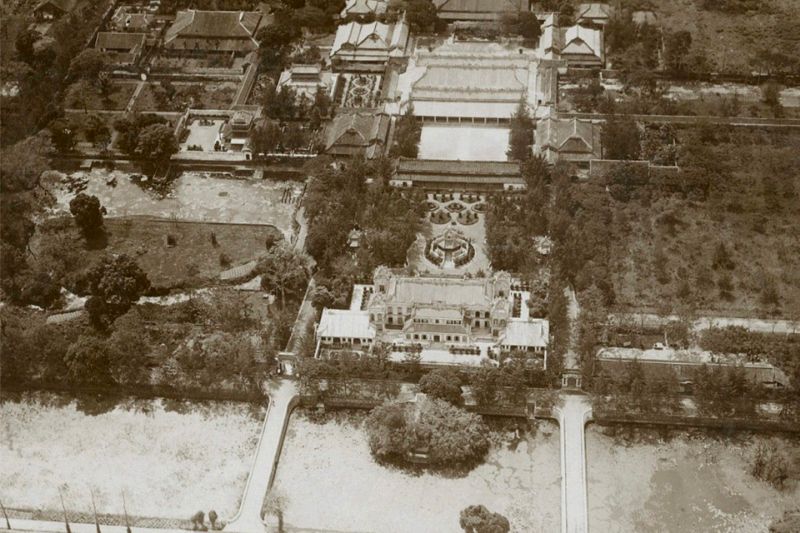
In December of 1946, the Viet Minh forces carried out the strategy of seizing the enemy’s key strongholds and completely destroyed Kien Trung Palace. Hue Citadel was burned in 1947, leaving only the foundation and the surrounding fence of the palace. Later, the People’s Committee of Thua Thien Hue province, in collaboration with the center for preservation of Hue ancient capital relics, undertook restoration and renovation at this palace to serve tourism and protect the relics.
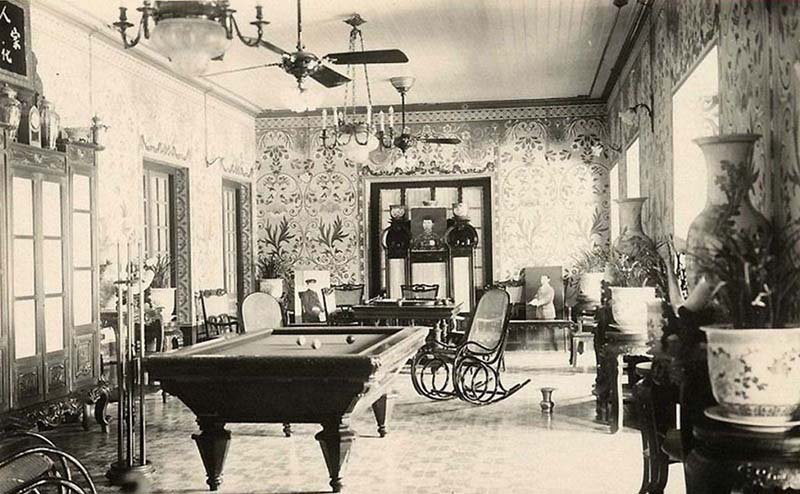
Exploring the Architecture of Kien Trung Palace
What makes the architecture of this palace unique is the combination of Italian Renaissance architecture, French architecture, and traditional Vietnamese architecture.
In front of the main palace is a scenic garden. Here, three staircases are intricately shaped like dragons, allowing visitors to ascend to the palace platform. The main floor is designed with 13 pavilions, 5 in the middle and 3 on each side. The upper area is also designed similarly to the main floor.
Kien Trung Palace After Restoration
The restoration process of Kien Trung Palace was initiated by the Hue Imperial Citadel Relics Conservation Center in February 2019 and was completed in 2024 with a total cost of 123.78 billion VND. Due to the intricate and unique decorations and designs of the palace, the restoration process required meticulous care and attention to detail.
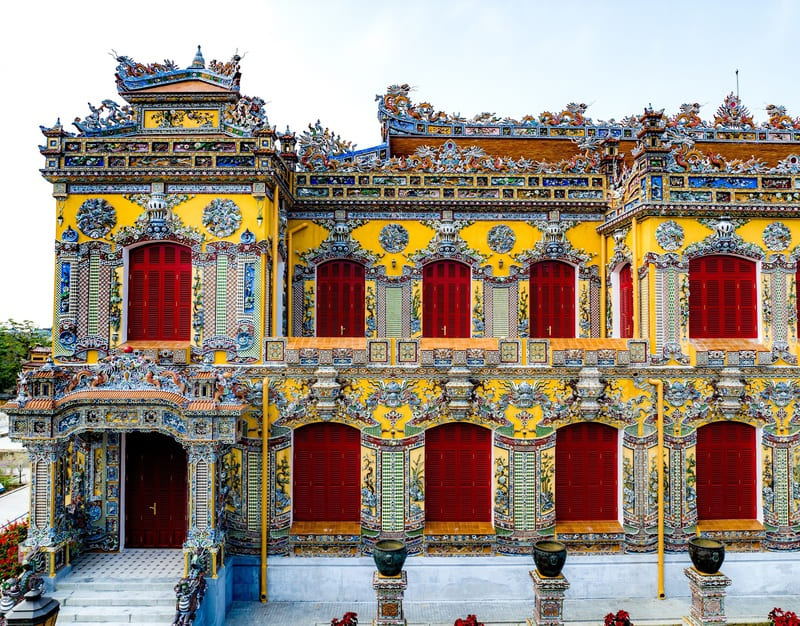
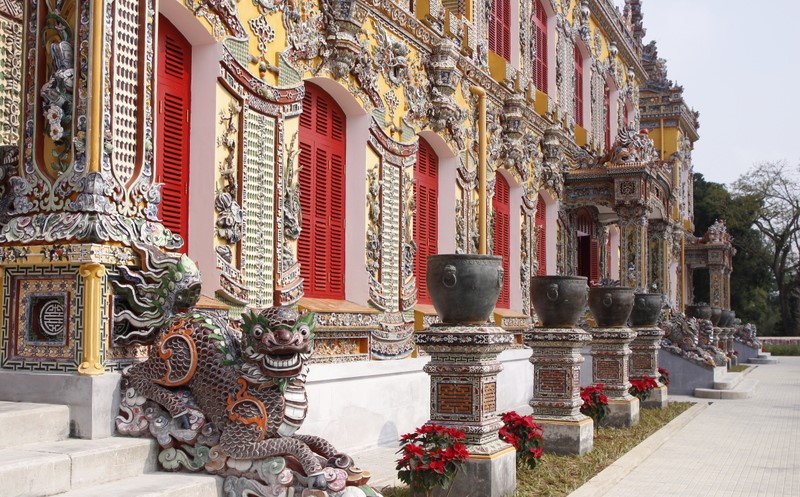
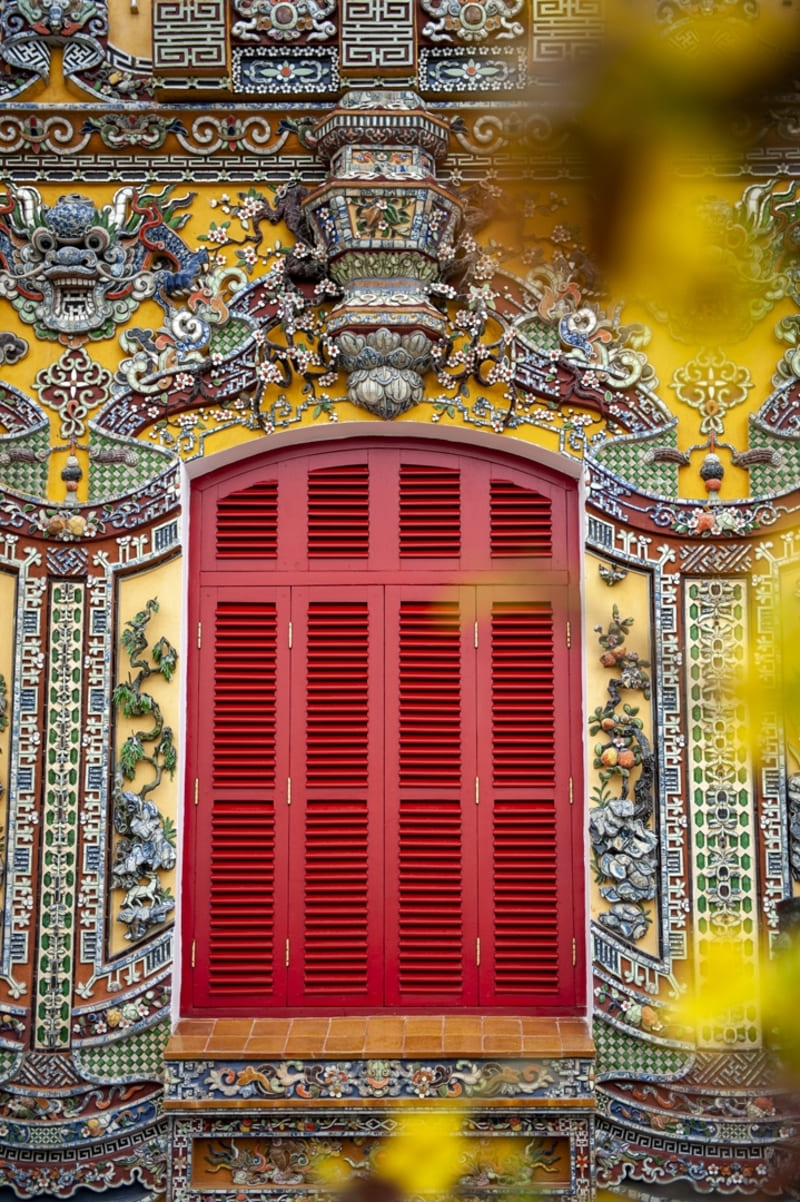
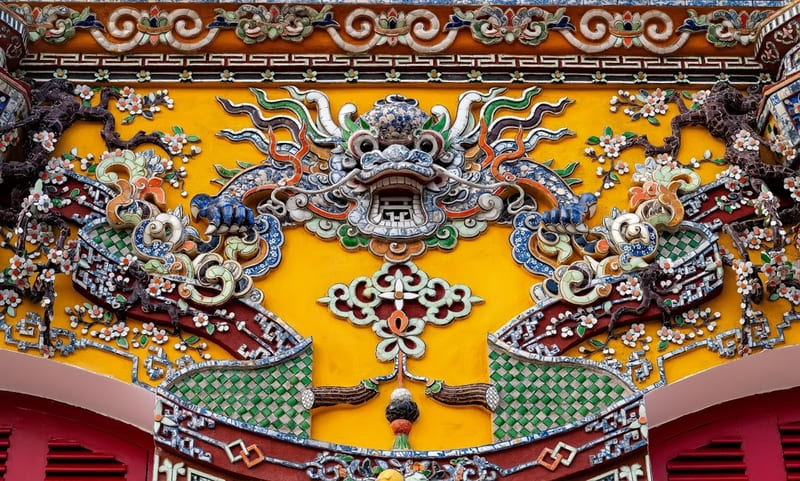
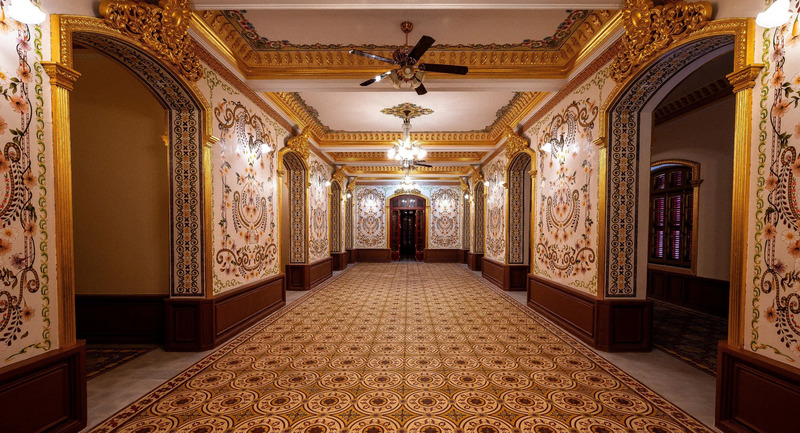
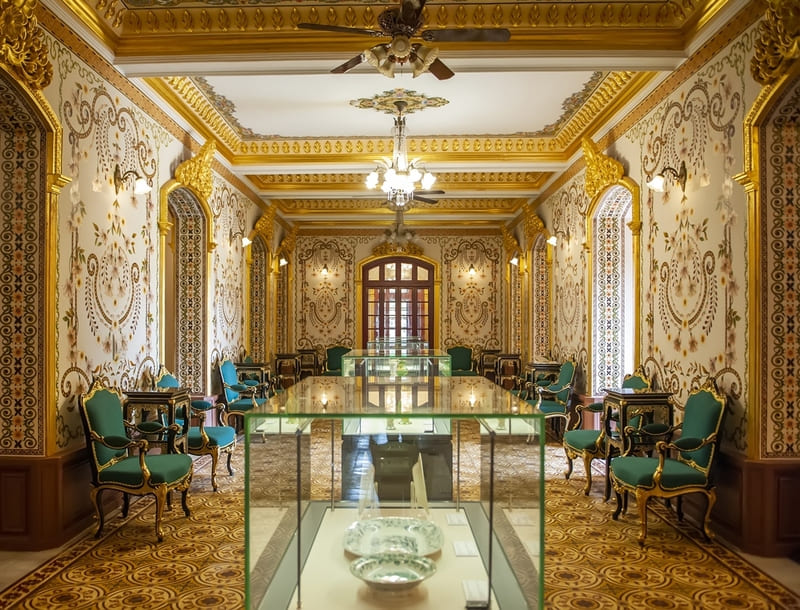
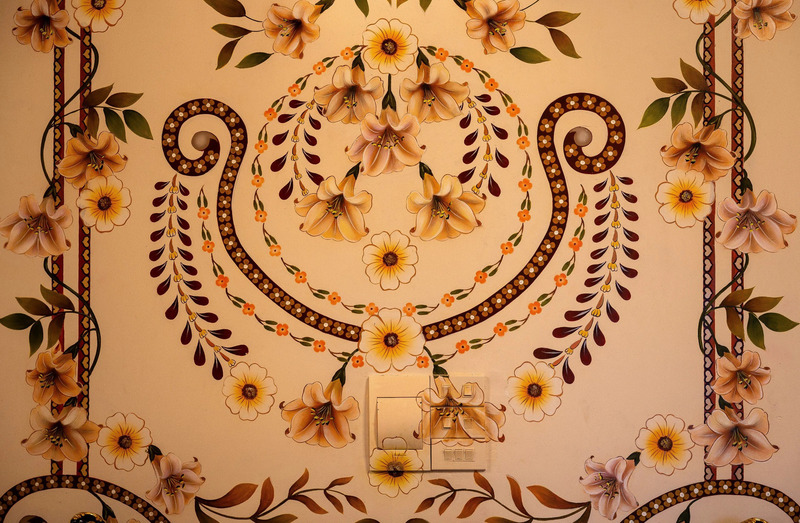
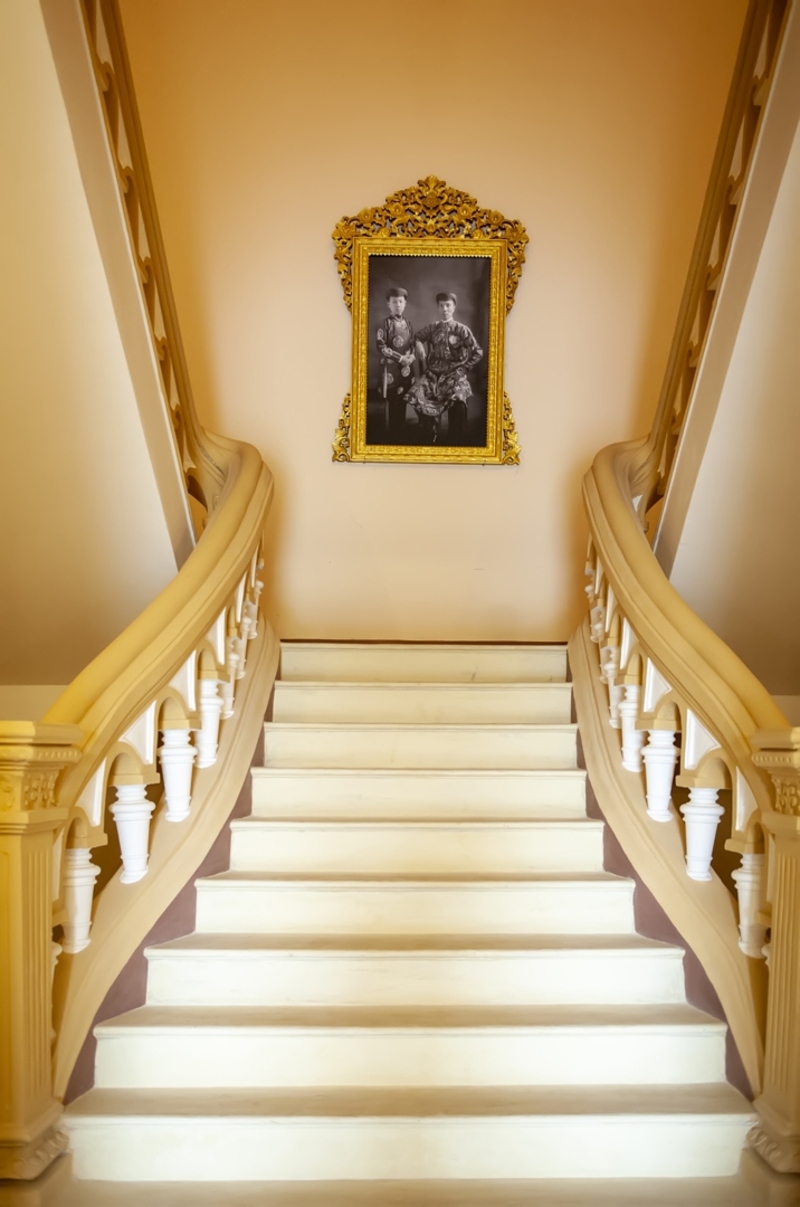
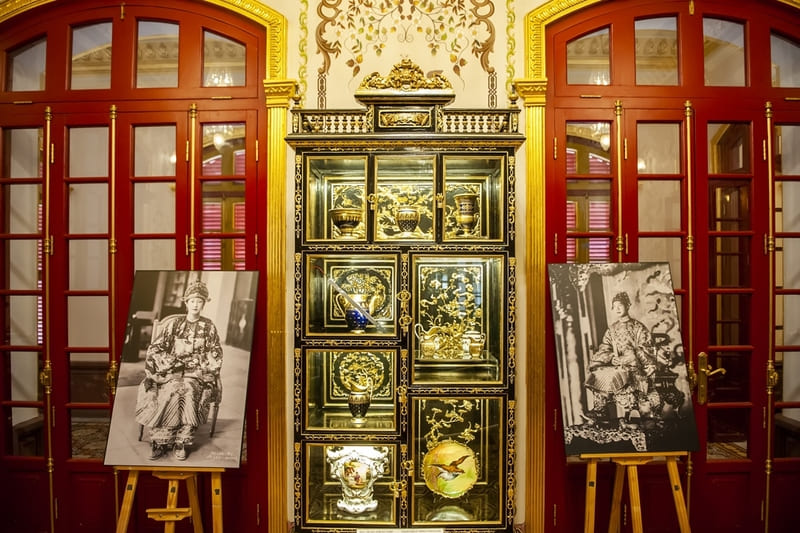
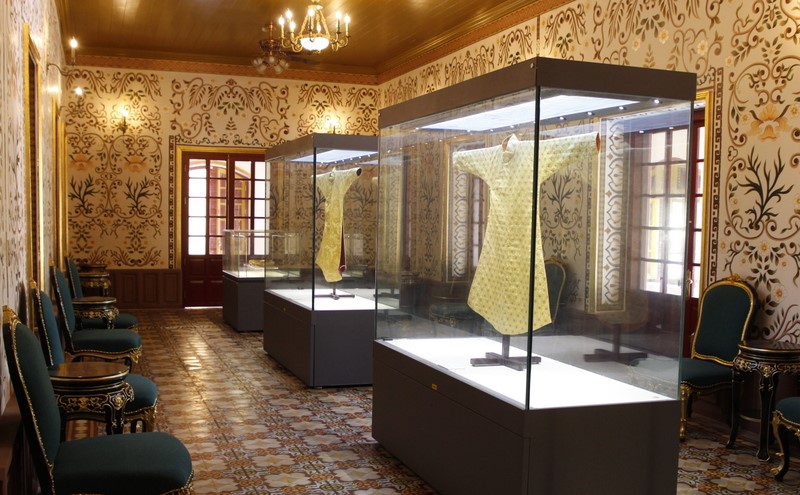
Tips for visiting Kien Trung Palace and the Imperial City of Hue
Kien Trung Palace is one of the palaces located within the Hue Imperial City complex. Additionally, there are many other remarkable architectural areas you can explore, such as Ngo Mon Gate, Thai Hoa Palace, Dien Tho Palace, etc. Visitors should also take the time to enjoy the delicious dishes of Hue’s royal cuisine when visiting the ancient capital.
To have the most convenient sightseeing trip, here are some important things to note:
- Hue Imperial City is vast with many different tombs and temples. Bring a map to avoid getting lost.
- Choose appropriate attire. Maintain elegance when entering the monuments while ensuring you can take photos and preserve beautiful moments.
- Adhere to regulations at the historical sites. Avoid filming the interior or touching artifacts.
- Ensure general hygiene.
Kien Trung Palace in Hue is not only a monument of great significance in terms of history, culture, and architecture, but it is also a tourist destination chosen by many when visiting the ancient land. This location helps visitors gain more knowledge about the royal tombs and monuments, accompanied by witnessing many rare historical images and documents firsthand. Hopefully, these insights will help you understand more about Kien Trung Palace in Hue!


